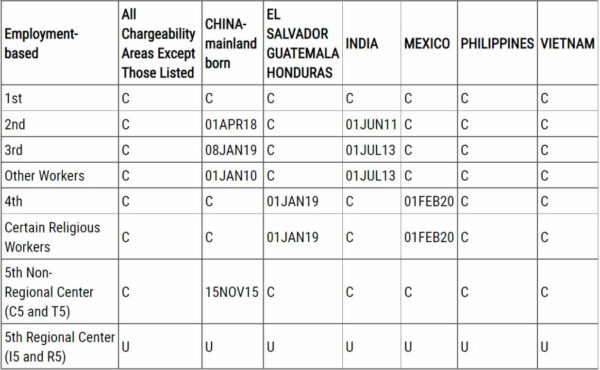
This sponsored column is by a guest columnist. All questions about it should be directed to James Montana, Esq., Doran Shemin, Esq., and Laura Lorenzo, Esq., practicing attorneys at Steelyard LLC, an immigration-focused law firm located in Arlington, Virginia. The legal information given here is general in nature. If you want legal advice, contact James for an appointment.
On Aug. 25, a group of 125 Indian and Chinese nationals filed suit against the Department of Homeland Security, arguing that USCIS is going to waste about a hundred thousand green cards. How? Therein lies a tale.
Our current immigration system relies on a taxonomy of categories and quotas. The taxonomy tells us what category you’re in (“Spouse of a U.S. citizen? This way!”) and the quota tells us how many green cards can be granted in that category per year. For most categories, there is more demand than the quota offers in supply — which means, in plain English, get in line.
How long are the lines?
Here is the August 2021 chart for family-based cases. The fastest cases (spouses and children of permanent residents, category F2A) have no line at all. The slowest cases (siblings of U.S. citizens) have been waiting in line since March 1, 2007, for most countries — and since January 22, 1999, for Mexico.
Here is the August 2021 chart for employment-based cases. Notice how many “C”s there are — that means more demand than supply with the notable exception of China and India.
So, how do you waste 100,000 green cards?
In some years, the full number of green cards available in a particular category are not issued. In 2020, thanks to the COVID pandemic, many green cards went unused — U.S. embassies were closed and not issuing immigrant visas. U.S. law allows these unused green cards to be transferred from oversupplied categories into undersupplied categories in the following fiscal year — sometimes! The process is complex and described in more detail here.
In 2021, unused green cards from the family category were “rolled over” into long-delayed employment-based categories, thereby allowing about one hundred thousand foreign workers — most of whom had already been living and working in the United States for many years — to apply for green cards.
The problem is that this roll-over only lasts until the end of the federal fiscal year. If the green cards are not issued by Oct. 1, the unused green cards will themselves be considered a surplus and will be rolled back into other categories in the following fiscal year. As of July, the State Department estimated that about 100,000 green cards would be left on the table.
A group of U.S. immigration lawyers led by Greg Siskind filed suit, seeking to either compel the government to adjudicate these pending green card applications before the end of the fiscal year or establish a process whereby the unused green cards would be reserved after the end of the fiscal year. The former solution would require more bureaucratic action than experience leads us to expect, and the latter solution does not dovetail easily with the law. According to the Wall Street Journal, “[s]ome officials hope the lawsuit filed this week succeeds in having a judge rule that the unused green cards can carry into the next fiscal year.”
Our immigration system is irrational, but it should at least be efficient in allocating visas authorized by Congress. We hope that USCIS will be able to adjudicate these applications fairly, accurately and quickly. And, if judicial intervention doesn’t provide a way for unused visas to be reallocated quickly and fairly, Congress could step in. There’s always hope.
As always, we welcome any thoughts or comments and will do our best to respond.



